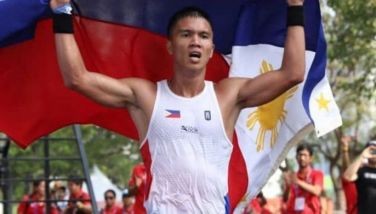96 HYV varieties in past 17 years
Ninety-six improved and high-yielding varieties (HYVs) of rice have been bred by the country’s research sector over the past 17 years.
This makes the rice research community one of the most productive and dynamic components of Philippine agriculture over the past almost two decades.
The breeding and commercial release of the 96 varieties gave the farmers enough latitude to select which varieties suited their agro-ecological systems.
The HYVs were developed by scientists and researchers of the Department of Agriculture-Philippine Rice Research Institute (DA-Phil-Rice), International Rice Research Institute (IRRI), DA-Bureau of Plant Industry (BPI), University of the Philippines Los Baños (UPLB), and private entities such as SL Agritech, Bayer Crop Science, Monsanto, and Syngenta.
Dr. Leocadio S. Sebastian, DA-PhilRice executive director, told The STAR that of the 96 varieties, 46 inbred or ordinary rice are suited to irrigated lowland ecosystems, 15 are for rainfed areas. 11 are hybrid, eight are adapted to saline zones, six are for cool elevated places, six are for uplands, and four are glutinous (malagkit).
These varieties have been approved for commercial production by the National Seed Industry Council (NSIC), the government body under DA tasked with helping develop the local seed industry.
Eight of the varieties have been bred for the rainfed lowland (transplanted) ecosystem while seven are suited for rainfed dry-seeded condition.
The 11 hybrid varieties developed by the government and private research agencies have been given the name Mostiao with their respective numbers.
For instance, the SL-8H hybrid rice variety developed by SL Agritech Corp. got the tag Mostiao 6; the PSD 3 bred by Syngenta-Phils, Mestiso 10; and the BCS 064 of Bayer Crop Science, Mestiso 11. Mestiso 10 and 11 are the latest varieties to be released for commercial production.
Since the early 1990s, rice varieties, depending on the ecosystems they are suited to, have been named after mountains (Makiling, Arayat, Banahaw, Apo) and rivers (Mestiso, after a river in Vigan City, Ilocos Sur; Chico, Agno, Rio Grande).
With the hybrid rice varieties, the DA under the leadership of Agriculture Secretary Arthur G. Yap has been implementing the government’s Hybrid Rice Commercialization Program (HRCP) in an effort to enable the country to attain self-sufficiency in rice at the soonest possible time.
Northern Luzon’s cool elevated areas have also been beneficiaries of the research breakthroughs achieved by IRRI and PhilRice in the form of six varieties suited to highlands.
Also not overlooked are saline-prone irrigated lowland areas, for which eight varieties were bred, and for the upland farms, six.
Four are glutinous varieties that feel at home in irrigated lowland. — Rudy A. Fernandez
- Latest






























